Pasco County Fire Rescue Announces The Rollout of the DECON 1 program

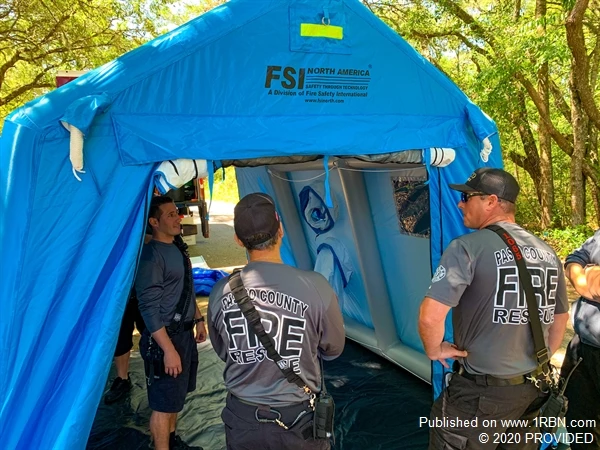
Photo by PROVIDED
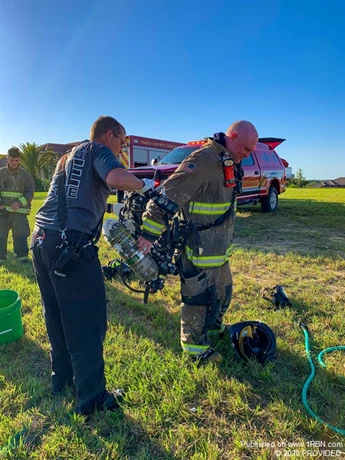
Photo by PROVIDED
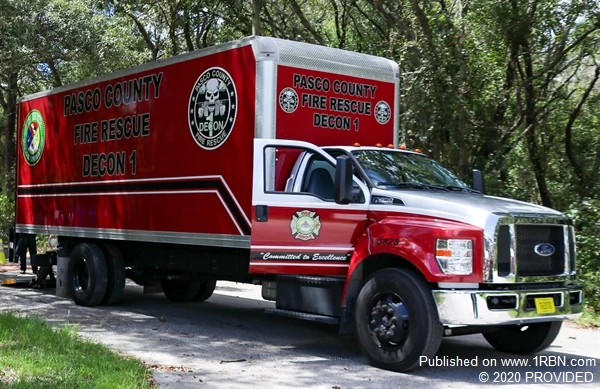
Photo by PROVIDED
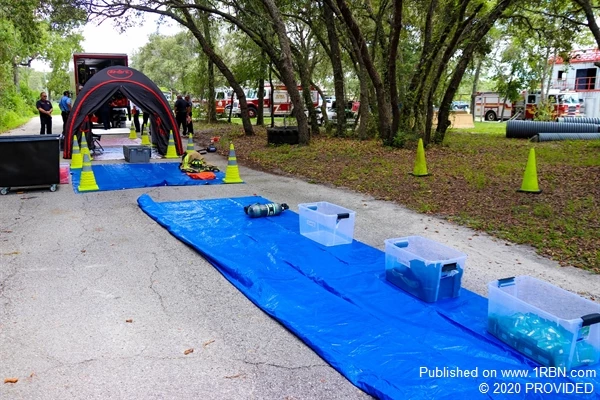
Photo by PROVIDED
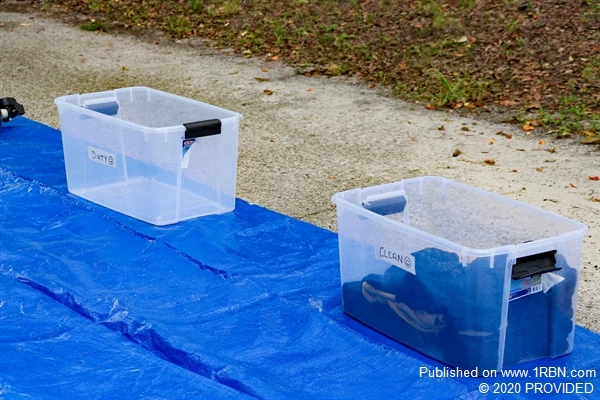
Photo by PROVIDED
In 2020 fire service history was set to be made in Pasco County. The first of its kind, on-scene decontamination apparatus aimed at modernizing firefighter health and wellness, was placed in service. The unit is called PCFR Decon 1.
Decon 1 is an on-scene gear delivery and decontamination process that provides Pasco County firefighters with clean gear after every fire, Hazardous Materials incident, and significant EMS incident before returning to the station. The decontamination apparatus is staffed 24/7 with a firefighter/decon technician, backed up by two alternate decon technicians.
So, how did we get here? As in many fire departments across America, Pasco County Fire Rescue recognized the need to implement and define on-scene decontamination. A committee was formed and met to identify the parameters of Tox-Decontamination and how we should move forward. The tedious task of determining what and how to decon was started. We also needed to identify what type of equipment is necessary to complete the on-scene decontamination process.
As with many new programs, they often morph, and the Pasco County Fire Rescue's initial Tox-Decon program was no exception. During 2017, after many meetings and much research, a plan was created and prepared for implementation.
Our revisions are made because new research is available, or new equipment is needed. At times we discovered what we were doing was sufficient, but at other times we found a superior way to complete the task of on-scene decon.
The vision of Decon 1 started during discussions about the purchasing process for the second set of gear for each firefighter, the required documentation for each set by NFPA (Advanced inspections, cleanings, repairs, etc.), and then managing the equipment for each shift. The discussion also revolved around the importance of Decon for our Firefighters.
Our Decon 1 process boasts five different stations:
Station 1 – Gross Decon
Station 2 – equipment drop
Station 3 – PPE drop
Station 4 – shelter to clean/change contaminated uniform
Station 5 – clean PPE distribution
This system can quickly expand or contract based on incident needs.
With a rough idea of what we wanted, Decon 1 began to come together. We first discussed PPE, how much was needed, what sizes, how we were going to carry it, and how we would distribute it. We also included in the PPE: helmet headbands changed out on the scene, exchanged gloves, exchanged hoods, and finally exchanged radio straps.
Decon 1 is currently carrying 160 sets of gear with a complete variety of sizes for our firefighters. To keep all equipment and supplies organized, we implemented a hanging system and storage bins. Over the next 12 months, we are transitioning to use RFID to assist us in tracking the PPE.
The conversations moved to the type of apparatus to be used in this application. Should we purchase a stock vehicle, use a trailer or custom build? We decided to move forward with a 24' stock box truck to begin the program. We quickly realized the need for a purpose-built unit, and
moved on with plans to design and build a custom, one of a kind apparatus.
Besides, the PPE that will be carried on Decon 1, supplies needed to operate on the scene are:
• Pneumatic Shelter
• Tarps
• Cones
• Green buckets with brushes
• ¾" hose and nozzle, adaptor
• Large laundry bin
• Decon bags /6 mil bags
• Seat covers
• Decon wipes
• Tyvek with PAPR – for technicians
• Slides
After being in service for a couple weeks, we have discovered a need for additional items: a small table and chair set, toolbox, 10x10 canopy, cooler for refreshments/water, and extra lights. These have been purchased.
We are adhering to "shower within the hour" protocol; however, when you consider the variety of carcinogenic products firefighters are exposed to, we felt the need to add another component to our on-scene decon process. We need to get our firefighters as clean as possible before they leave the fire ground. This included having a change of clothes available on the scene, a safe, modest way to change inside a portable shelter, and wipes to ensure the removal of additional carcinogens.
To address on-scene needs, we are outfitting a "go-bag" for all firefighters. While on shift, Firefighters must carry a change of duty uniform, undergarments, and shoes inside their go-bag. The go-bag will be used when the firefighter enters the portable shelter to clean and change their dirty dress. One of our operational considerations during a hazardous materials incident is Time, Distance, and Shielding. Using decon wipes and changing clothes helps us to reach this concept.
Decon isn't meant to be just another "check in the box" for our incident commanders; it needs to be a working group within the Incident Management System. To achieve this, the Decon Technician is assigned as the Decon group leader on an incident. This allows the technician to manage their division while still working under the Incident Commander.
We committed to assigning staff 24/7 with sworn personnel. Our technicians will be required to:
• become NFPA 1851 certified,
• manage all assigned PPE on their assigned shift,
• launder all contaminated gear,
• return cleaned gear to personnel, and
• of course, maintain Decon 1 supply.
We are doing a "soft rollout" to work through all details and identify where we need to make changes and improvements. We are planning to evaluate at 30, 60, and 90 days, after which recommendations will be made to finalize an Administrative Order concerning Decon 1 and its operation. We are open to receive feedback from all stakeholders. To date, the overwhelming response has been positive from our firefighters and Union. We are finding the firefighters are most interested in using the decon wipes and receiving clean gear.
We are excited to share our experiences regarding PCFR Decon 1. If you have questions or recommendations, my contact information is below.
John Schmidt
Division Chief – Health, Safety, and Training
Pasco County Fire Rescue
jschmidt@pascocountyfl.net








